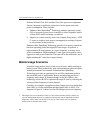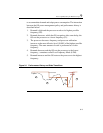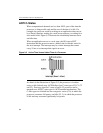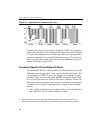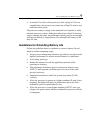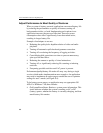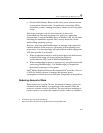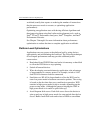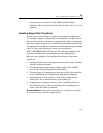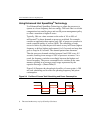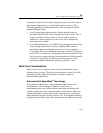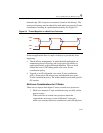
IA-32 Intel® Architecture Optimization
9-10
workload (usually that equates to reducing the number of instructions
that the processor needs to execute, or optimizing application
performance).
Optimizing an application starts with having efficient algorithms and
then improving them using Intel software development tools, such as
Intel
®
VTune™ Performance Analyzers, Intel
®
Compilers, and Intel
®
Performance Libraries.
See Chapter 2 through 6 for more information about performance
optimization to reduce the time to complete application workloads.
Platform-Level Optimizations
Applications can save power at the platform level by using devices
appropriately and redistributing the workload. The following techniques
do not impact performance and may provide additional power
conservation:
• Read ahead from CD/DVD data and cache it in memory or hard disk
to allow the DVD drive to stop spinning.
• Switch off unused devices.
• When developing a network-intensive application, take advantage
of opportunities to conserve power. For example, switch to LAN
from WLAN whenever both are connected.
• Send data over WLAN in large chunks to allow the WiFi card to
enter low power mode in between consecutive packets. The saving
is based on the fact that after every send/receive operation, WiFi
remains in high power mode for up to seconds, depending on the
power saving mode. (Although the purpose keeping the WiFI in
high power mode is to enable a quick wake up).
• Avoid frequent disk access. Each disk access forces the device to
spin up and stay in high power mode for some period after the last
access. Buffer small disk reads and writes to RAM to consolidate



